The Frontend for your FHIR® Server
With Records, you interact with the data on your FHIR® server in real-time. Browse resources by type, customize reports and inspect the content and concepts by means of a structured and clear form with editing ability at your fingertips.
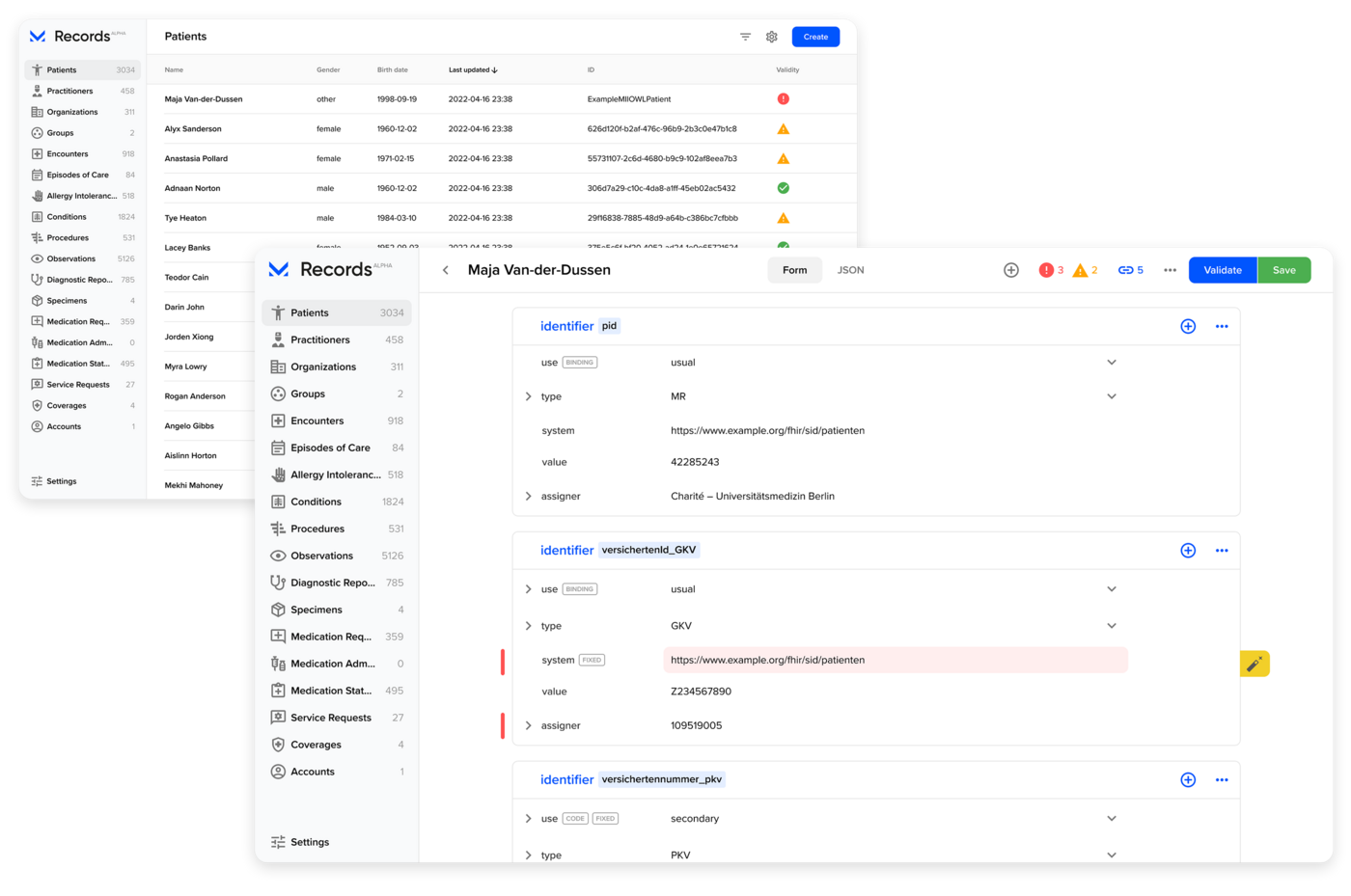
Explore records on your FHIR® server
Browse through your medical records by report-like listing overviews. View singular resources considering profiles and references.

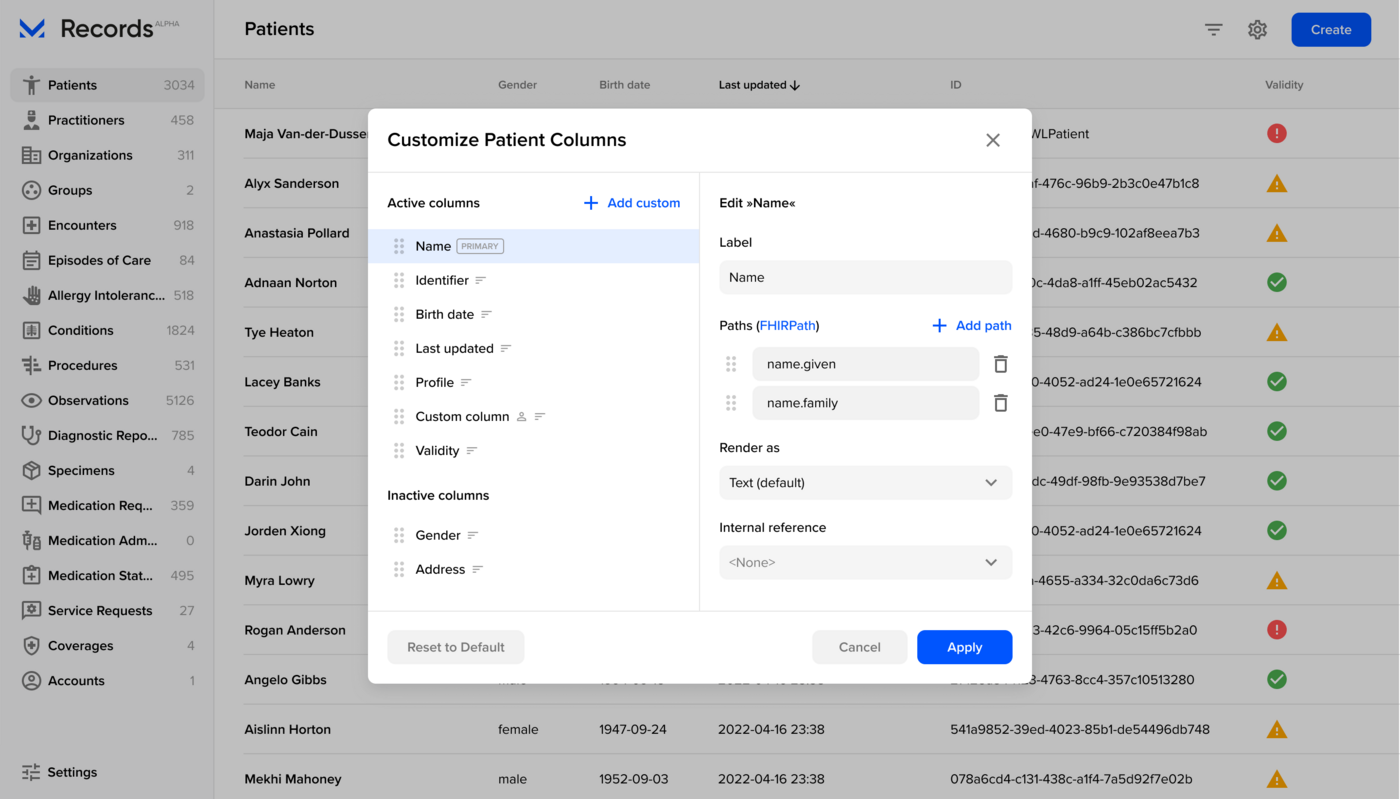
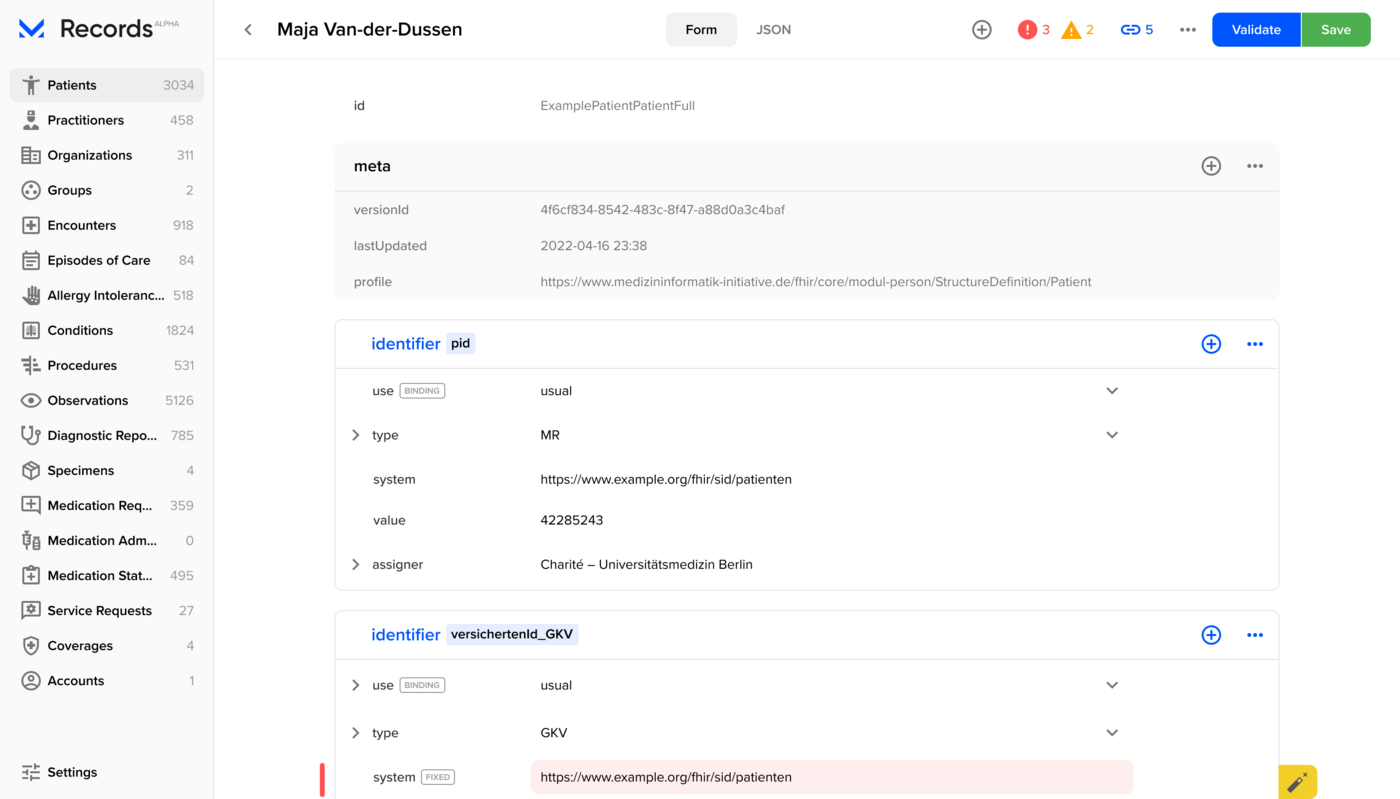
Editing of records suited for domain experts
Until recently the editing of FHIR® resources was reserved for IT specialists. Not anymore. Records renders a form suited for reading and editing for domain experts with basic FHIR® knowledge.
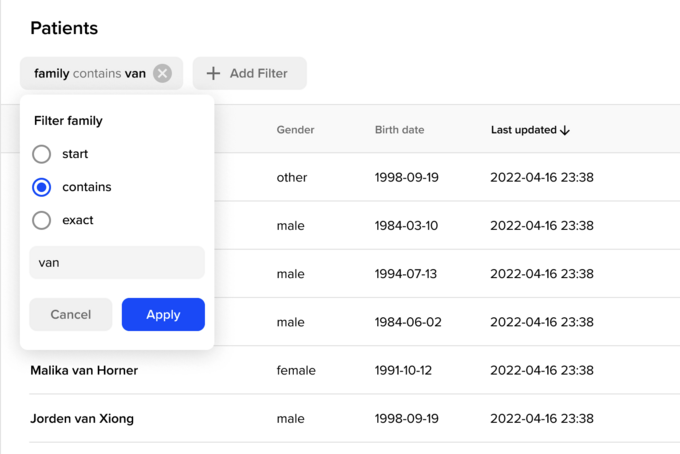
Filter the list view
Make use of the fundamental mechanics of FHIR® to search for resources. Utilize search parameters of the FHIR® search framework for simple searches or advanced and complex queries. Save the filter combinations into dynamic collections useable for others.
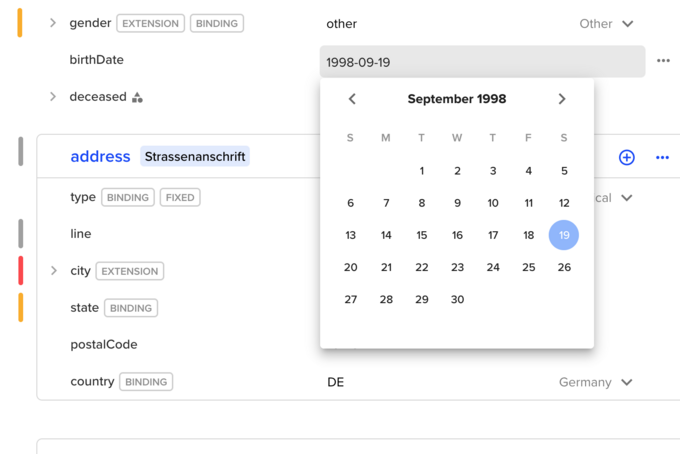
Edit existing & create new resources
While viewing a resource, you directly see keys that are required by profile so that you can simply edit the values. You can also add others keys at any level and edit the values. The different data types are presented with the appropriate input type, encouraging precision and decreasing input errors.
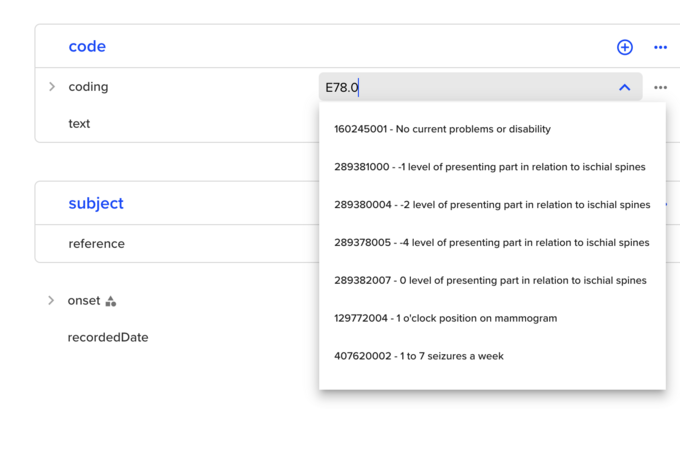
Select from value sets and catalogues
When a data item is restricted by a value set the selection provides you with available options to choose from. With fast, incremental search, and context-specific result ordering Ontoserver puts SNOMED CT, AMT, LOINC, and FHIR®-based CodeSystems at your fingertips.
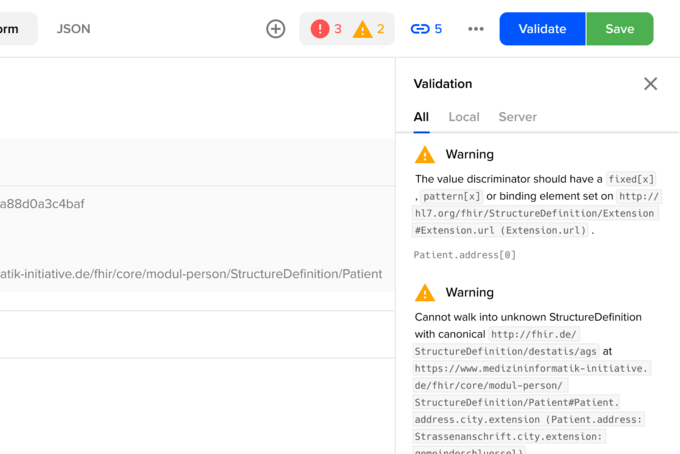
Instant & Server-side validation
Validate your resources against FHIR® profiles defined for your project. Records is naturally taking care of the validity of profile conformity regarding structure, cardinality, value domains etc. Local validation takes places in real-time. Invalid fields are highlighted providing a comprehensible error message.
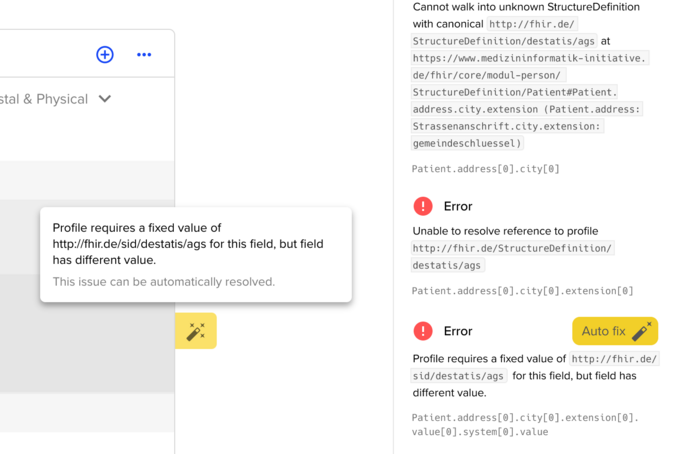
Auto-fixing of errors
Some of the errors you might encounter can be automatically fixed with one click. Records automatically recognized mismatches between the FHIR® profile and the given resource and proposes automatic fixing of errors.
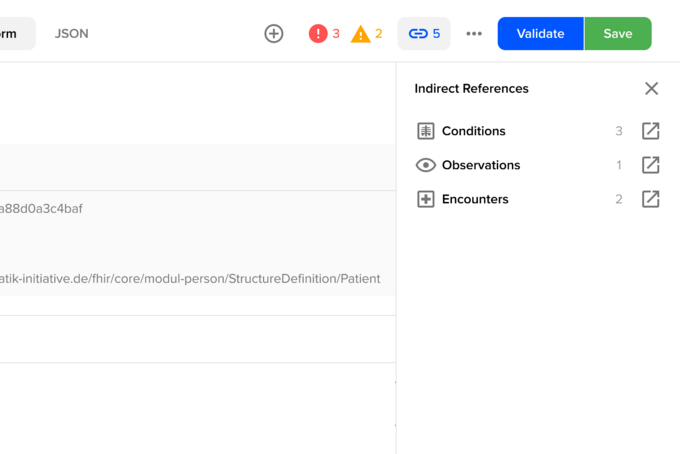
Follow direct and indirect references
Resources often come in bundles that reference one another. Direct references pointing to other resources are rendered as links are therefore easy to follow. Indirect references, resources pointing to the currently viewed resource, are available for quick access as well.
Easy installation & setup
Point to your FHIR® and you are ready to go.
Connect any FHIR® server
Connect to any FHIR® server via REST-API by entering the URL to start browsing resources. Close integration with conformance resources (Profiles, ValueSets, CodeSystems) and standards-based capabilities makes Records vendor-agnostic.
Easy installation
Records runs in restricted networks without Internet access and is using Structure Definitions directly from the FHIR server. If Internet connection is available, Records can check for unknown profiles on Simplifier.net if desired and use them for validation.
Connect terminology server
In order to resolve large Code Systems that have many internally defined properties (e.g. SNOMED CT, LOINC), Records can be connected to an external terminology server. We are recommending CSIRO Ontoserver.
Define relevant resources & profiles
You can just browse all resources available on the server by category, see the amounts and select them to appear in the main menu and assign default profiles to be used during resource creation.
Read-only mode
If you only want to view the resources but not edit them, you can simply switch to read-only mode. With this, you can still use the powerful list view with filtering and view specific resources and their validity in detail.
Provisioning & updates
There are many ways to run Records, but we recommend running our Docker image to enable fast & easy setup. Upgrading to newer versions is as simple as updating the image.
Connect any FHIR® server
Records has been tested for use with Firely VONK, HAPI, IBM FHIR Server and is expected to work with any other FHIR server.
Use Cases
View FHIR® resources
Review and export actual data without distorting layers or blindness to uncovered subsets.
Edit FHIR® resources
Modify or create FHIR® resources directly on the FHIR® server without the need to access the source application.
We'll be happy to answer any questions you have about Records in a guided demonstration.